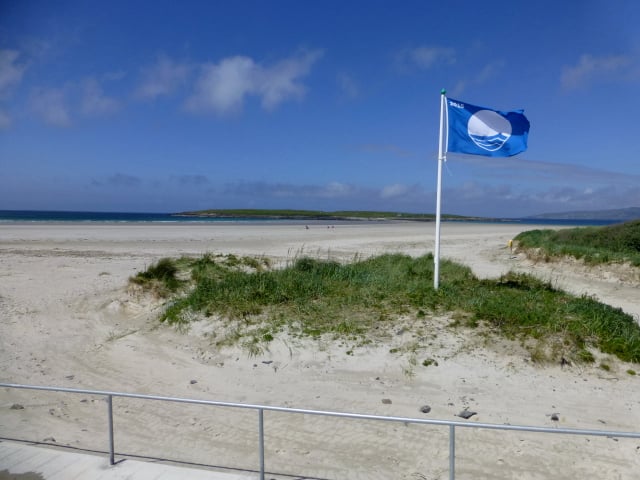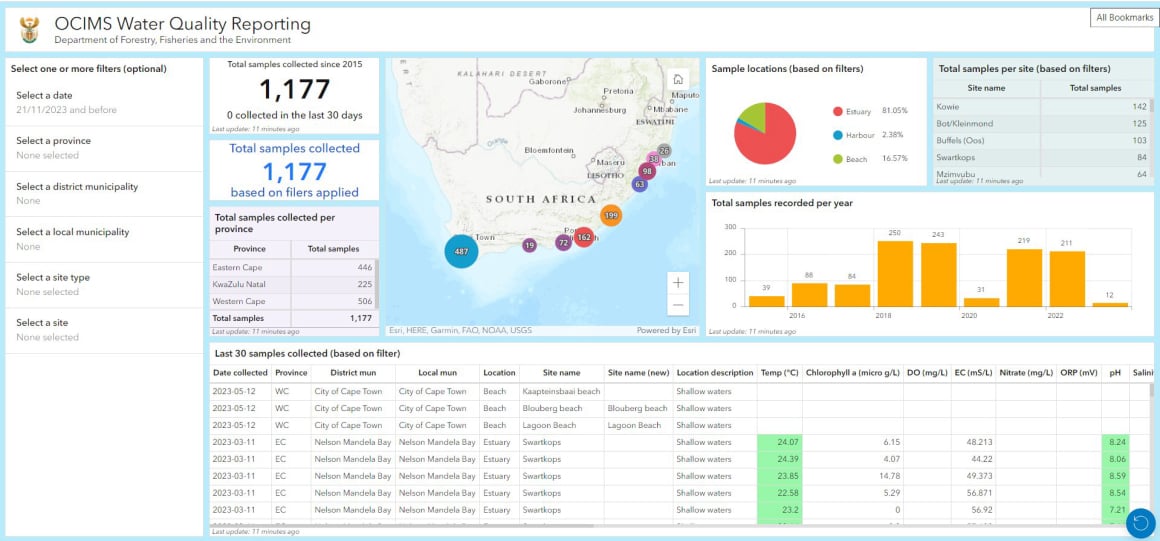
Beach with Blue Flag status (Source: WESSA, 2019)
How do earth observations (EO) help determine water quality?
Recently, ocean colour satellites have become available with appropriate resolution for near coastal observations. These satellites can provide remote sensed data every few days applicable to a wide range of coastal phenomena, including gross water quality parameters. They can therefore support the detection of substantial changes to aspects of coastal ecosystems over time and space.
Processed satellite imagery is used in the Water Quality DeST to provide information on the concentration of phytoplankton as given by the pigment chlorophyll a, the turbidity of the water due to suspended sediment or discharged particles, and the presence of any unusual discharge material causing surface discolouration e.g. industrial effluent. Satellites are not able to directly detect bacterial pathogens, heavy metals or other water quality parameters that do not cause a colour change.
The two satellite constellations relevant to water quality are the Sentinel 2 series, providing products at 10 m to 60 m resolution every five days and the Sentinel 3 series, providing products at ±300 m resolution every day. The satellite data, acquired from the European Space Agency (ESA) and the European Organisation for Meteorological Satellites (EUMETSAT), are processed by the CSIR using regionally appropriate algorithms.

